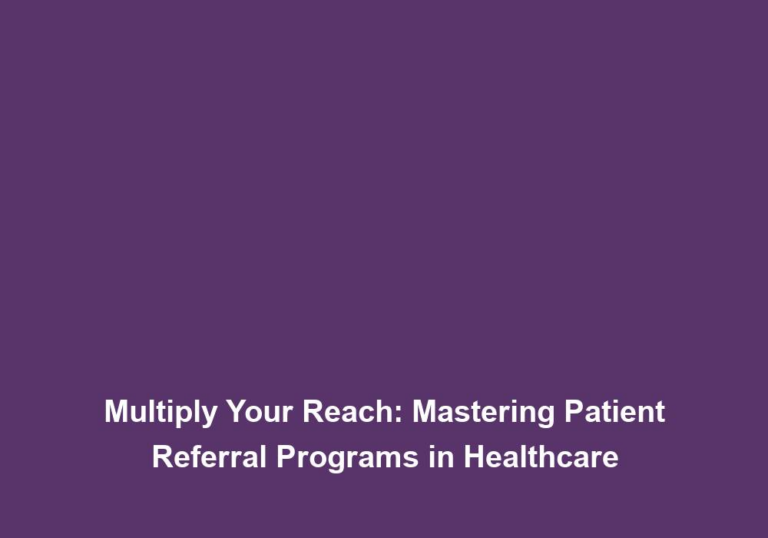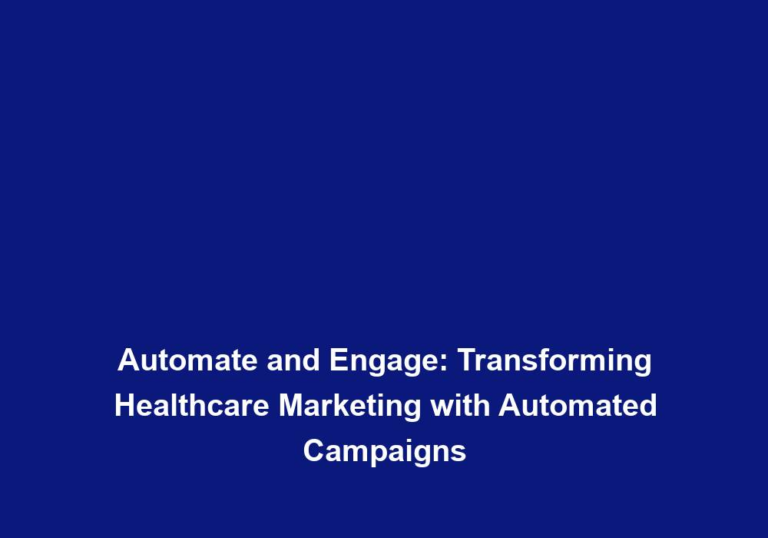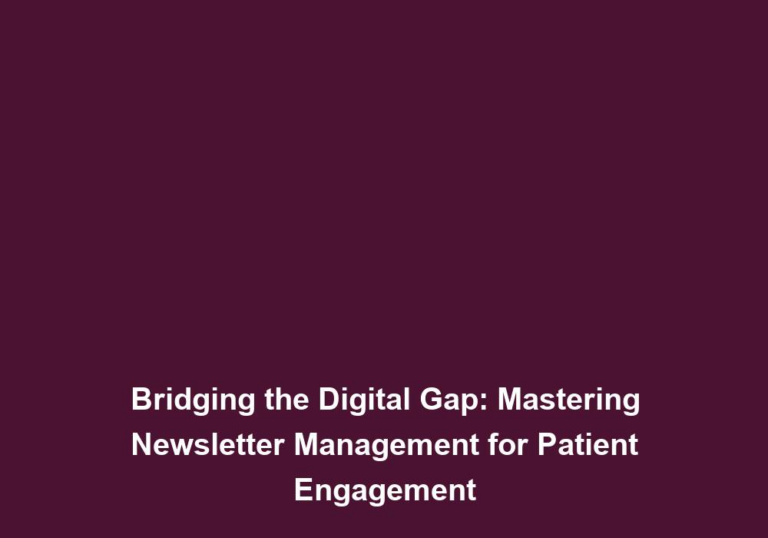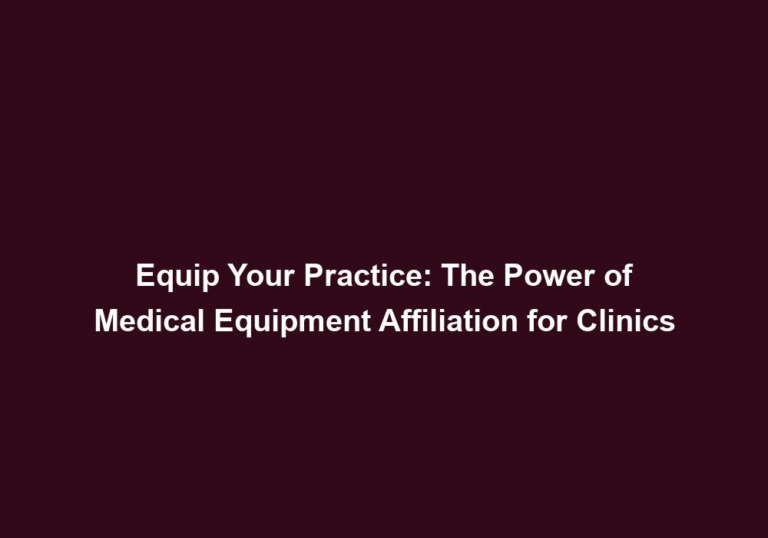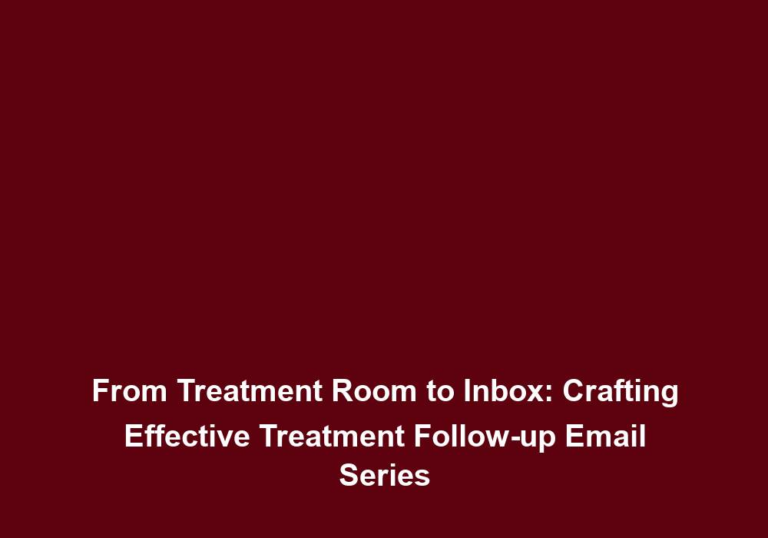Boosting Email Impact: Segmentation & Personalization in Healthcare Marketing
Email marketing has become an essential tool for businesses across various industries, including healthcare. It offers a cost-effective and efficient way to engage with patients, healthcare professionals, and other stakeholders. However, with the increasing volume of emails being sent daily, it is crucial for healthcare organizations to stand out from the crowd and ensure their messages are impactful and relevant. This is where segmentation and personalization play a vital role.
Why Segmentation and Personalization Matter in Healthcare Marketing
Segmentation and personalization allow healthcare marketers to tailor their messages to specific groups of recipients and individuals. By understanding the unique needs, preferences, and characteristics of their target audience, healthcare organizations can deliver more relevant and valuable content. Here’s why segmentation and personalization matter in healthcare marketing:
- Improved Relevance: Segmenting your email list based on factors such as demographics, medical conditions, or healthcare interests enables you to send targeted messages. By delivering content that is relevant to each recipient’s specific needs, you increase the likelihood of engagement and response.
Segmentation allows you to divide your email list into smaller, more targeted groups. For example, by segmenting based on demographics, you can create separate email campaigns for different age groups to highlight age-specific healthcare concerns or promotions. This level of personalization ensures that your messages resonate with each recipient, increasing the chances of them engaging with your content.
- Enhanced Personal Connection: Personalization helps establish a connection between the healthcare organization and the recipient. By addressing individuals by their name and tailoring the content based on their specific circumstances, you create a sense of trust and empathy.
When recipients receive an email that addresses them by their name and speaks directly to their unique circumstances, they feel acknowledged and valued. This personal connection fosters trust and strengthens the relationship between the healthcare organization and the recipient. By understanding their needs and tailoring your content accordingly, you can establish yourself as a reliable source of information and support.
- Increased Engagement: Relevant and personalized emails are more likely to be opened, read, and acted upon. Segmentation and personalization allow you to deliver content that resonates with the recipient, leading to higher engagement rates and improved campaign performance.
When recipients receive emails that are tailored to their specific needs and interests, they are more inclined to engage with the content. This could involve opening the email, reading the entire message, clicking on links, or taking desired actions, such as booking appointments or signing up for newsletters. By delivering personalized content, you can capture and maintain the attention of your audience, resulting in increased engagement and improved campaign performance.
- Better Conversion Rates: When emails are tailored to the unique needs and interests of recipients, the chances of conversions increase. By including personalized calls to action and offers, you can drive specific actions, such as appointment bookings, newsletter sign-ups, or accessing educational resources.
Personalized calls to action and offers speak directly to the recipient’s interests and needs. By highlighting specific healthcare services or promotions that align with their preferences, you can motivate them to take action. Whether it’s booking an appointment, signing up for a newsletter, or accessing educational resources, personalized content increases the likelihood of conversion, ultimately benefiting both the healthcare organization and the recipient.
- Improved Customer Satisfaction: When patients and healthcare professionals receive emails that address their specific concerns or provide valuable information, they feel appreciated and valued. This, in turn, enhances overall customer satisfaction and loyalty.
By delivering personalized content that addresses the recipient’s concerns or provides valuable information, you demonstrate that you understand their unique needs. This level of care and attention fosters a sense of appreciation and value, ultimately leading to increased customer satisfaction and loyalty. Happy and satisfied customers are more likely to engage with your organization in the future and recommend your services to others.
Effective Segmentation Strategies in Healthcare Marketing
To maximize the impact of your email marketing campaigns, it is essential to segment your audience effectively. Here are some strategies to consider:
1. Demographic Segmentation
Segmenting your audience based on demographic factors such as age, gender, location, or occupation can help you deliver more targeted messages. For example, you can create separate email campaigns for different age groups to highlight age-specific healthcare concerns or promotions.
By understanding the demographics of your audience, you can tailor your content to resonate with their specific characteristics. For instance, if you have a younger audience, you might focus on wellness tips and preventive care, while an older audience may be more interested in information about chronic illness management. Demographic segmentation allows you to deliver content that is most relevant to each group, increasing engagement and response rates.
2. Behavior-based Segmentation
Analyzing the actions and behaviors of your email subscribers can provide valuable insights for segmentation. You can segment based on engagement levels, such as frequent openers, non-openers, or those who click on specific links. This allows you to tailor content based on their level of engagement, increasing the chances of conversion.
By tracking how recipients interact with your emails, you can gain valuable insights into their preferences and interests. For example, if a recipient consistently opens and clicks on articles related to a specific medical condition, you can segment them into a group interested in that topic. This allows you to send them targeted content related to their interests, increasing the likelihood of engagement and conversion.
3. Preference-driven Segmentation
Allowing recipients to define their preferences during the subscription process provides an opportunity for effective segmentation. For instance, you can offer options to choose the type of content they are interested in, such as disease-specific updates, wellness tips, or healthcare news. This allows you to send targeted content that aligns with their preferences.
By giving recipients the ability to choose the type of content they want to receive, you ensure that they receive information that is most relevant to them. This not only increases the likelihood of engagement but also demonstrates that you respect their preferences and value their input. Preference-driven segmentation allows you to deliver content that aligns with the specific interests of each recipient, resulting in higher engagement rates.
4. Geographical Segmentation
Segmenting your audience based on their geographical location can be particularly useful for healthcare organizations with multiple locations or regional services. By tailoring your content to specific regions or local healthcare events, you can provide more relevant and timely information to your recipients.
Geographical segmentation allows you to deliver location-specific content that is most relevant to your recipients. For example, you can send updates about local health fairs, community events, or regional health initiatives. By providing information that is specific to their geographical area, you demonstrate your commitment to serving their local healthcare needs, increasing engagement and fostering a sense of community.
5. Life Stage Segmentation
Segmenting your audience based on life stages, such as pregnancy, chronic illness, or senior care, can help you deliver highly personalized content. This allows you to address specific concerns, offer relevant resources, and showcase specialized services that align with their current life stage.
Understanding the life stage of your recipients allows you to provide tailored content that meets their specific needs. For example, if a recipient is pregnant, you can send them information about prenatal care, childbirth classes, or baby care tips. By addressing their unique circumstances and concerns, you position yourself as a trusted source of support and information, enhancing engagement and building stronger relationships.
Implementing Personalization Techniques
Once you have effectively segmented your email list, it’s time to leverage personalization techniques to create impactful messages. Here are some key methods to consider:
1. Personalized Subject Lines
Craft subject lines that address the recipient by their name or include personalized details. This grabs their attention and increases the likelihood of your email being opened.
Personalized subject lines create a sense of familiarity and intrigue, encouraging recipients to open your emails. By addressing them by their name or including specific details that resonate with their interests or needs, you immediately capture their attention and make them more likely to engage with your content.
2. Dynamic Content
Utilize dynamic content to customize the body of your emails based on the recipient’s segmentation criteria. This could include personalized greetings, tailored recommendations, or specific service offerings.
Dynamic content allows you to create customized email templates that automatically adjust based on the recipient’s segmentation criteria. For example, you can include personalized greetings that address the recipient by their name, or tailor the content to showcase specific healthcare services or recommendations based on their interests. This level of personalization enhances the recipient’s experience and increases the chances of them engaging with your email.
3. Tailored Offers and Calls to Action
Include personalized offers and calls to action that align with the recipient’s interests and needs. This could be offering a discount on a specific healthcare service they have shown interest in or providing a personalized link to schedule an appointment.
Tailored offers and calls to action speak directly to the recipient’s preferences and motivations. By offering discounts or promotions on healthcare services they have shown interest in, you incentivize them to take action. Similarly, providing personalized links or buttons that lead to appointment scheduling or other desired actions increases the chances of conversion.
4. Personalized Recommendations
Based on the recipient’s segmentation criteria and previous interactions, provide personalized recommendations for relevant healthcare resources, articles, or educational materials. This demonstrates that you understand their specific needs and are willing to provide valuable information.
Personalized recommendations showcase your expertise and understanding of the recipient’s needs. By analyzing their segmentation criteria and previous interactions with your emails, you can suggest relevant healthcare resources, articles, or educational materials that align with their interests. This not only helps them stay informed but also positions you as a reliable source of information and support.
5. Follow-up Emails
Personalize follow-up emails based on the recipient’s previous actions or interactions with your previous emails. This could include sending reminders for appointments, following up on a specific service inquiry, or providing additional information based on their previous engagement.
Follow-up emails allow you to nurture the recipient’s interest and maintain engagement. By personalizing these emails based on their previous actions or interactions with your previous emails, you demonstrate your attentiveness and commitment to meeting their needs. This personalized approach increases the chances of them taking the desired action or further engaging with your organization.
In conclusion, segmentation and personalization are powerful strategies that can significantly enhance the impact of your email marketing efforts in the healthcare industry. By delivering relevant and personalized content, you can improve engagement, increase conversions, and build stronger relationships with your audience. Remember to regularly analyze and refine your segmentation criteria to ensure your email campaigns continue to deliver value and resonate with your recipients.


